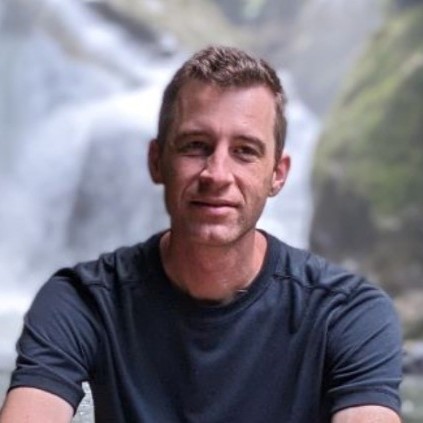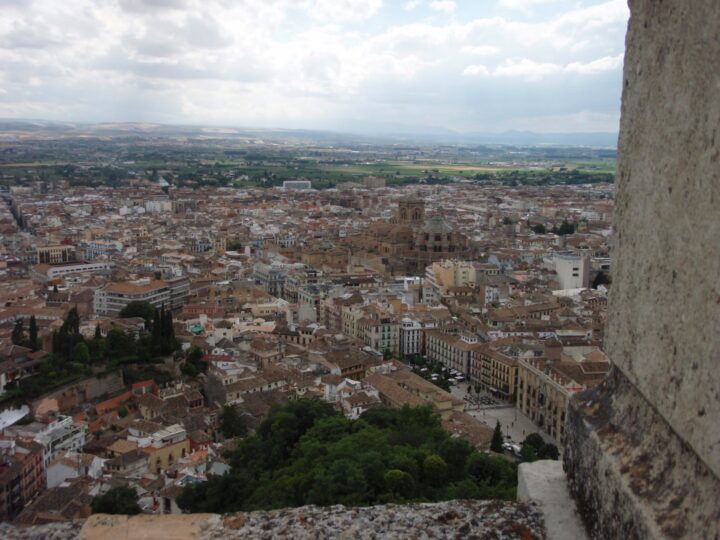5 Farms Our Family Volunteered at in South America
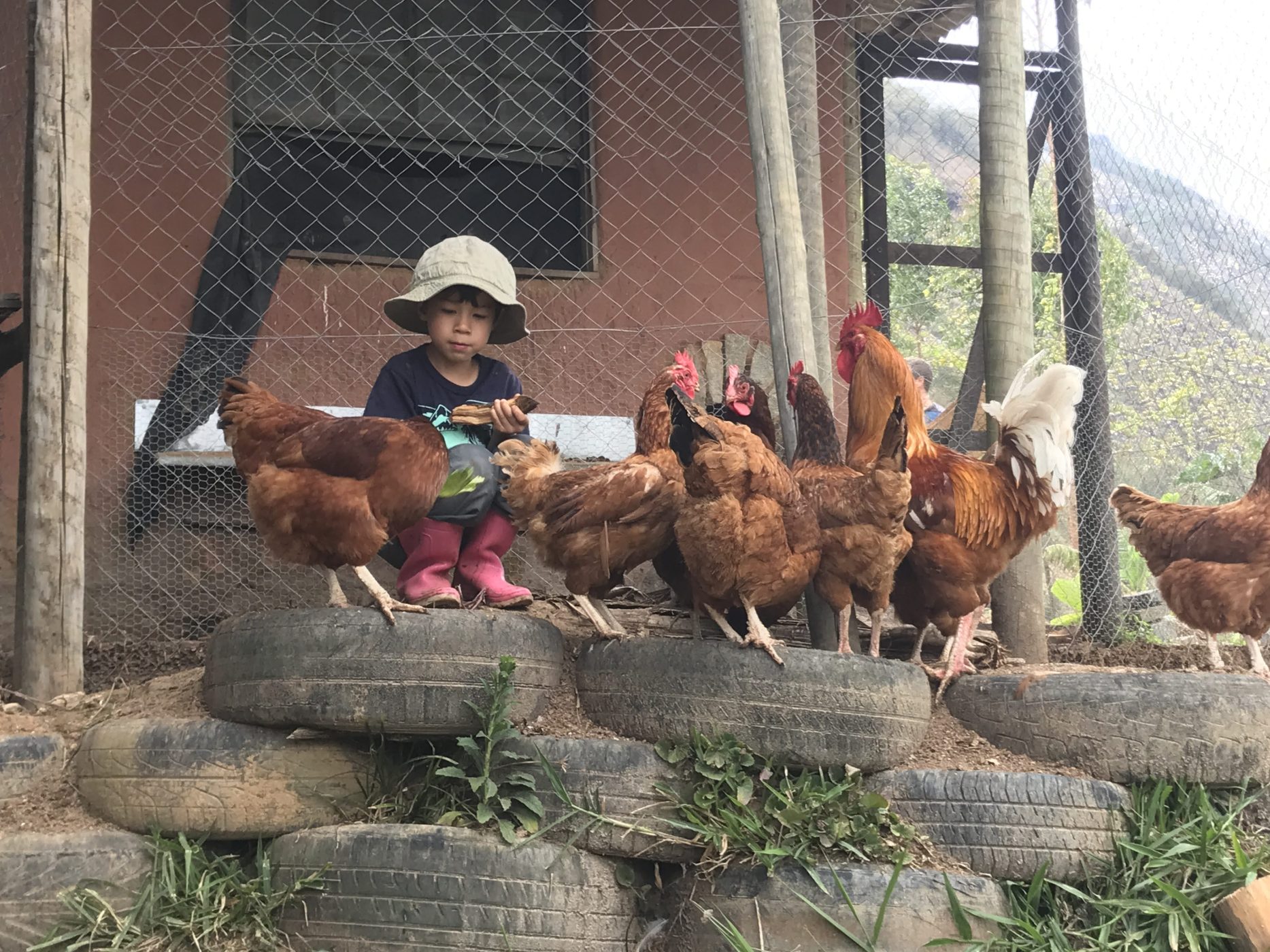
We are a family of five that traveled South America for a year. At the time of our travels, our boys were three, five and eight. We knew we wanted a deeper experience than just seeing the sights. One of the best ways we found to plug ourselves into a community and be part of a mission was to get our hands dirty and volunteer.
Why Volunteering at a Farm Should Be Part of Your Itinerary
Bouncing from one tourist trap to the next eventually becomes isolating and draining. Staying on a farm for several weeks, or even months, can give you a much-needed break from travel planning. It plugs you into a community of hosts and volunteers. It provides a refreshing opportunity to socialize outside your immediate family.
Our stays at five different farms were the highlights of our trip. We made friends while harvesting potatoes, collecting cow patties, and learning bioconstruction on the fly. Our farm stays are the source of some of our funniest and wildest travel stories. Our kids got to be with other kids. And they always fell in love with each farms’ dogs.
From the perspective of educating the kids, just think about everything that is grown in South America. Coffee. Chocolate. Bananas. Your blueberries come from Chile in the winter, because it’s summer there. So many products we just take for granted because they’re always stocked at the supermarket come from the southern hemisphere. And most of us haven’t even the faintest concept of how a coffee bean or a chocolate bar is produced. (We know now!) If you want your children to get a hands-on, worldschooling education, farm volunteering is where it’s at.
Some Considerations When Planning To Volunteer at a Farm
First of all, you should plan to stay for two weeks, minimum.
Also, most established programs charge North Americans a fee. Sometimes the cost is more than you would spend just independently traveling. But shouldn’t your hard labor compensate your room and board? Well, not so fast.
Let’s look at it form the perspective of your host. First, they have no guarantee that you know how to do the work. You may be aware that a company hiring a new employee expects productivity to decrease for the first few months. Not only does that new employee contribute less, but it also takes productive time out of the experienced folks to get them up to speed. It’s no different for a volunteer that plans to stay for a few weeks.
It’s also more challenging to host a family than a solo traveler. That’s more lodging space and food that could be used for more working volunteers or paying customers. Not to mention that kids might hurt themselves if they aren’t supervised.
Then there’s the fact that labor is typically cheap in most South American countries. From a purely economic perspective, farms are better off paying a local that knows what they’re doing and is used to heavy labor, than getting “free” labor from a tourist. (I can attest that being a wiz at Excel did nothing for my ability to drag 100lb bags of manure uphill.)
So, as unromantic as this sounds, volunteering is just another flavor of tourism. You get to immerse yourself and try your hand at farm life. The host either mentors your or puts together a program to make it educational. They often take you on outings. And if all goes well, you’ll even do something helpful and not break too many things.
Sometimes, there are opportunities to stay for the long haul, in which case staying for free might eventually become possible. (We got an offer on one of our stays.) But that doesn’t come until later. Until then, prepare for the sticker shock.
However… There is a workaround. If you are really determined to stay for free, you can make your own program! To do that, work your social network. Someone will know someone (or know someone who knows someone) who retired or left the rat race to make a new life farming coffee or chocolate in Ecuador, or raising sheep in Patagonia, etc. Then you reach out to that person and request to stay for a while and be a helping hand. It never hurts to ask. Make sure to mention the person who gave you their contact info. Be polite. Don’t necessarily ask to stay for free, let them offer it. The last two farms on our list were free stays we arranged through acquaintances.
Finally, keep in mind that every farm experience is VERY different. They differ in terms of philosophy, programming, cost, accommodations, and level of experience in hosting volunteers. So one experience doesn’t define them all, and as always, you’ll want to do your research.
The following are summaries of the five farms where we volunteered. Feel free to skip to the ones that interest you the most.
#1: Eco Caminhos Permaculture Farm in Brazil
In the sublime mountainous Atlantic rainforest of Rio de Janeiro State, Eco Caminhos combines agroforestry, bioconstruction and social work for a vibrant community volunteering experience. Bart, the Dutchman who founded the farm, believes that if we can combine respect for nature with beauty and human comfort, then both nature and humanity can flourish together.
In construction, he combines stunning architecture with natural solutions for heating, water and sewage. The agroforestry operation uses nature as a guide for growing produce, which he sells using a community-support agriculture model. He applies his engineering and business sensibilities to making his farming operation prosper in hopes of influencing other conventional farms in the region to follow suit. You get to experience all of it.
This was the most well organized and programmed experience we had, and it was our longest at two months. The package included Portuguese lessons, experiences for the kids, seminars on agroforestry and bioconstruction, and outings to various touristic destinations in the area. It was also the most pricey. Bart convinced us to stay in the newly built Eco-Lodge, which was a bit beyond what we needed or wanted to spend, but we were very pleased in the end!
In Bart’s previous career he ran an orphanage in Rio de Janeiro city. For his farm, he recruited several full-time workers from there. They help with the work and are the experienced hands that lead the volunteers. The result is that there is a built-in permanent community of Portuguese-speaking residents in addition to the volunteers coming from North America, Europe and other parts of Brazil. It had the most diverse and vibrant social scene of any of the farms where we stayed.

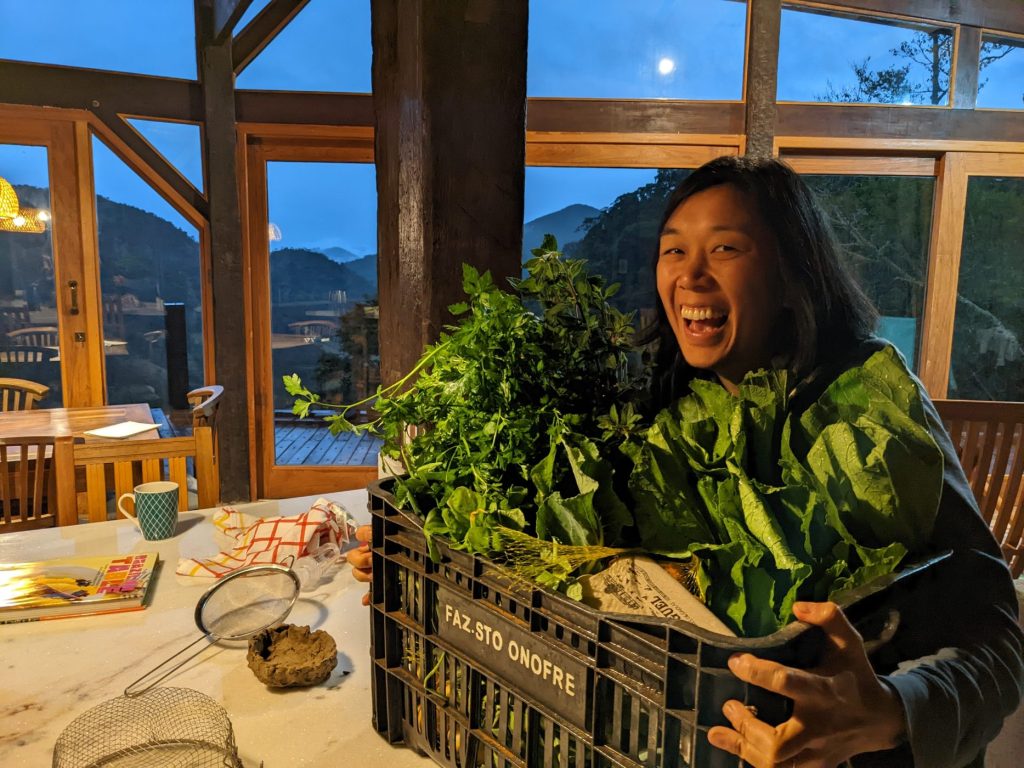
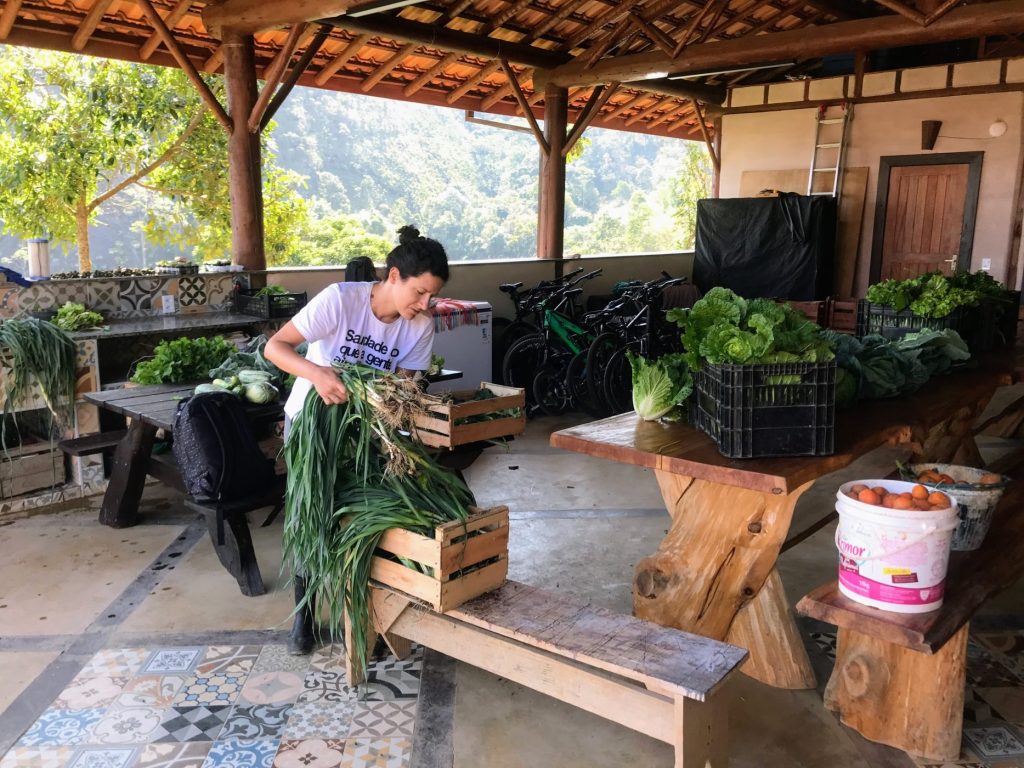
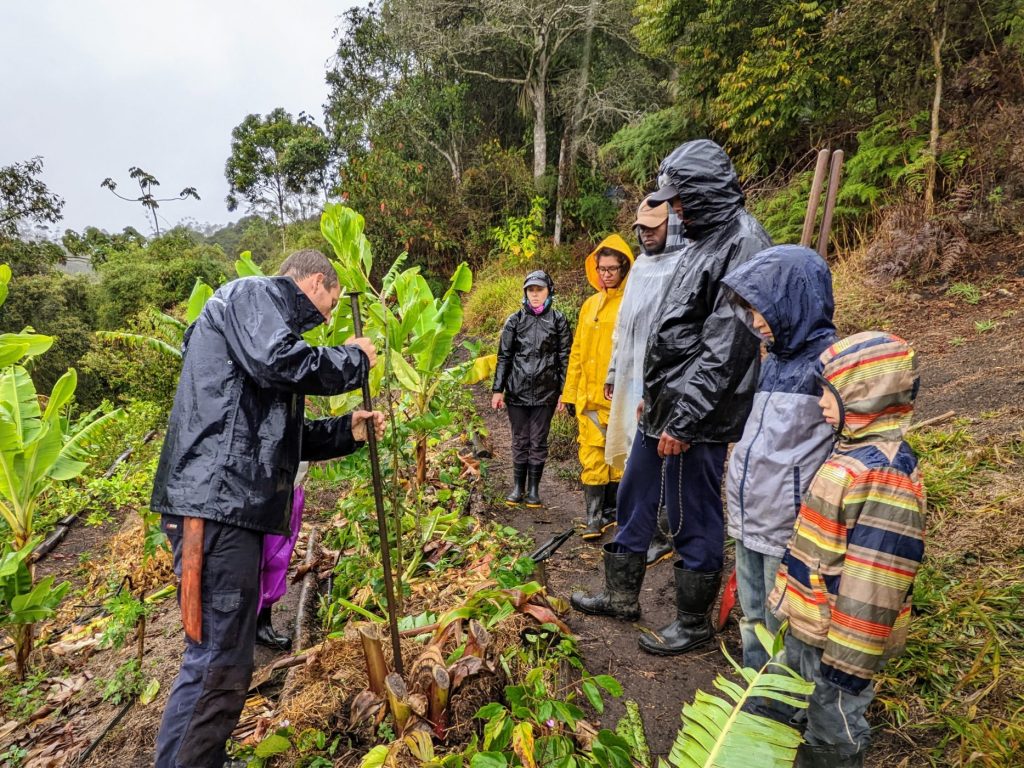
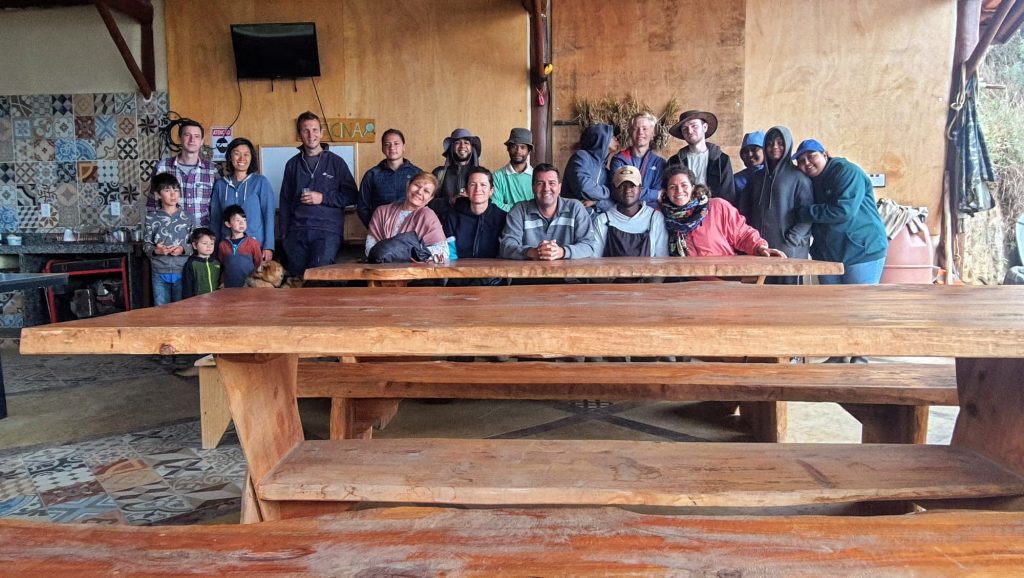
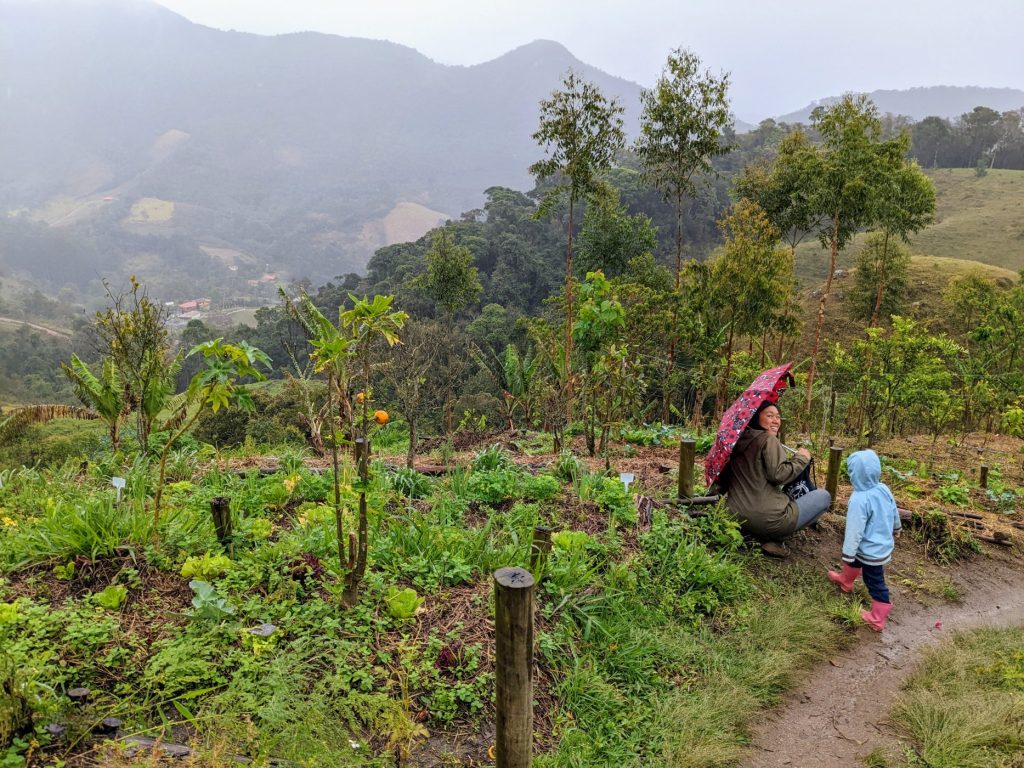
#2: Quinta Esencia in Argentina
Quinta Esencia is an oasis of forest and permaculture in the otherwise treeless farms of the northeastern Argentine pampas.
They incorporate beauty and symbolism into their aesthetic. The cistern, holding their precious reserves of rainwater, sits in the center of a grand circular garden, which is ringed by the main house, the toolshed, the greenhouse and the water tower. The house itself is rustic and gorgeous, though basic as far as comforts go. Especially in the heat of summer with no air conditioning.
Their emphasis is education and making connections. They do not sell anything produced on the farm. The twelve principles of permaculture serve as a guide for the physical design of the property as well as everything else, including human relationships, leadership and community.
There wasn’t really much of a program for us as volunteers specifically. We were joined by one other Argentine volunteer, Ani. We hit it off with her quite well. For the first week, we found ways to help with minimal guidance, which we actually enjoyed. Over the weekend, they had a yoga and healthy eating retreat, and suddenly there were a lot of people. We were allowed to join in the programming or work in the garden as we wished. After the four-day weekend was over, it was back to just a few of us again.
All in all, we learned more from just being there than any seminar. We experience firsthand how important it was to conserve rainwater. The ground water there is partially salty, being so close to the ocean. So the only potable water comes from rainfall capture. We bit our nails as the rains didn’t come and the cistern level got low. The dry toilets and external groundwater showers were put to use to take the pressure off. Water was gold.
The kids, of course, were aware of the situation. They noticed the contrast to when seemingly infinite amounts of water magically spewed from the tap back home. They also had a great time running around with the dogs and taking care of the chickens.
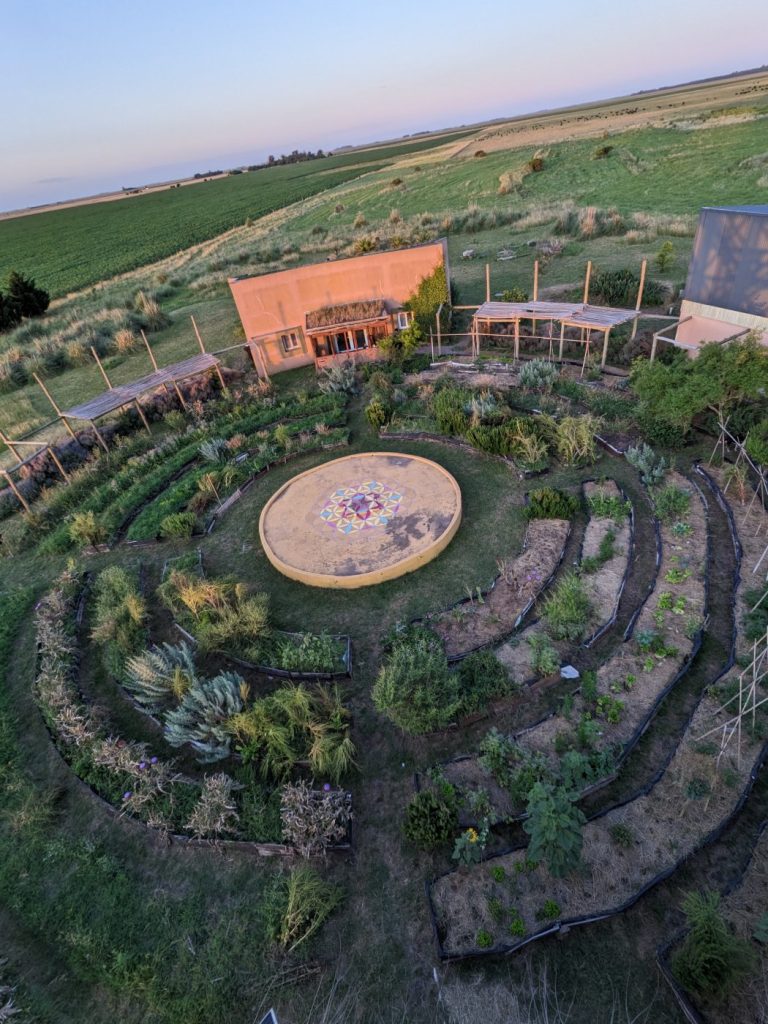
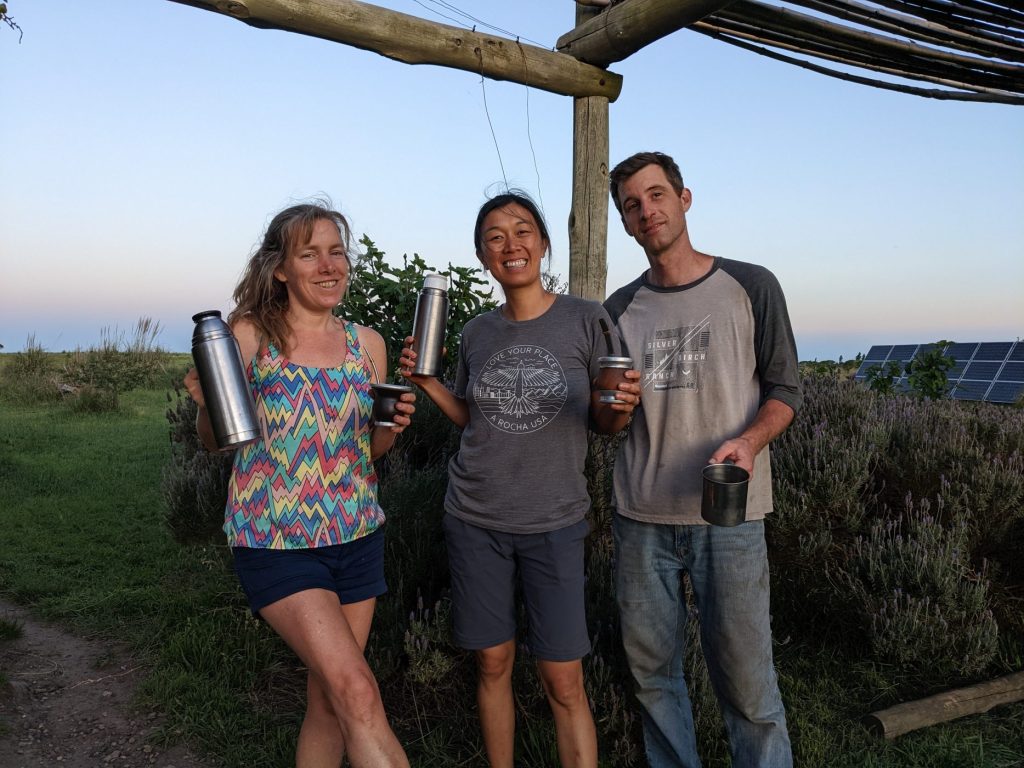
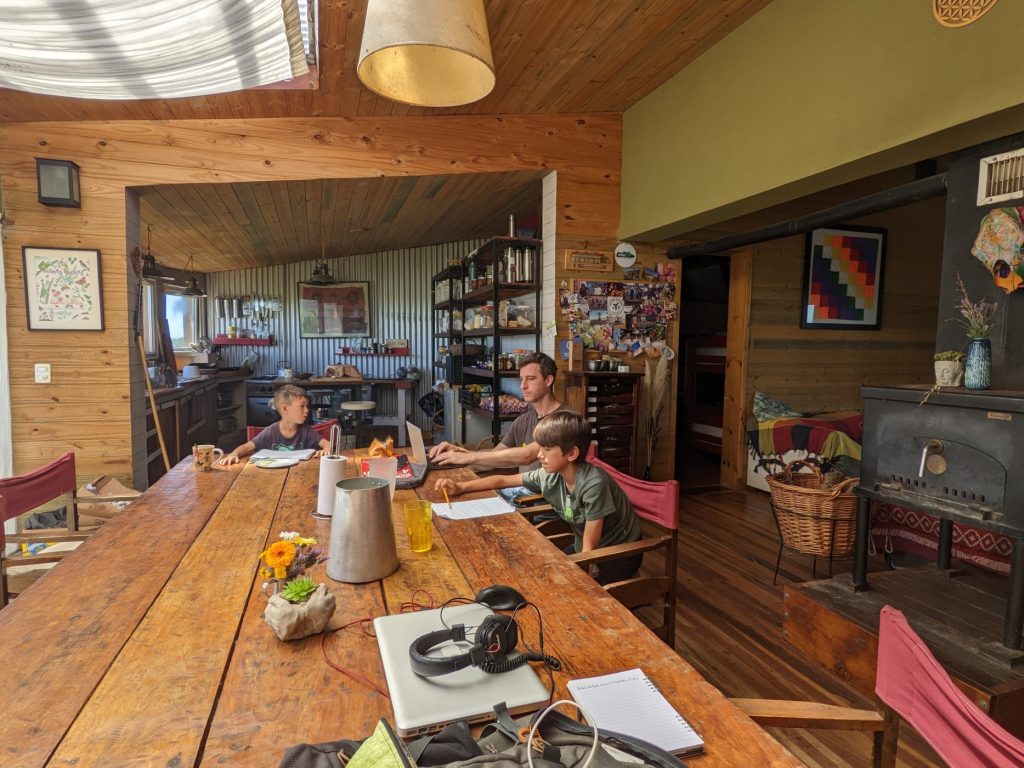
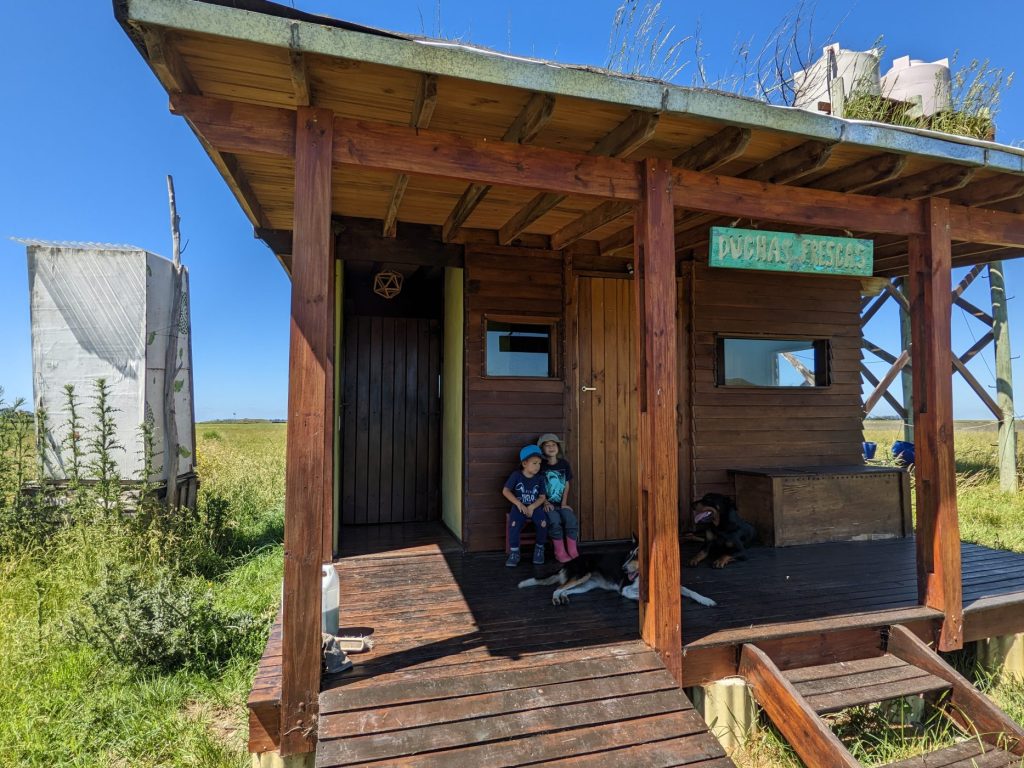
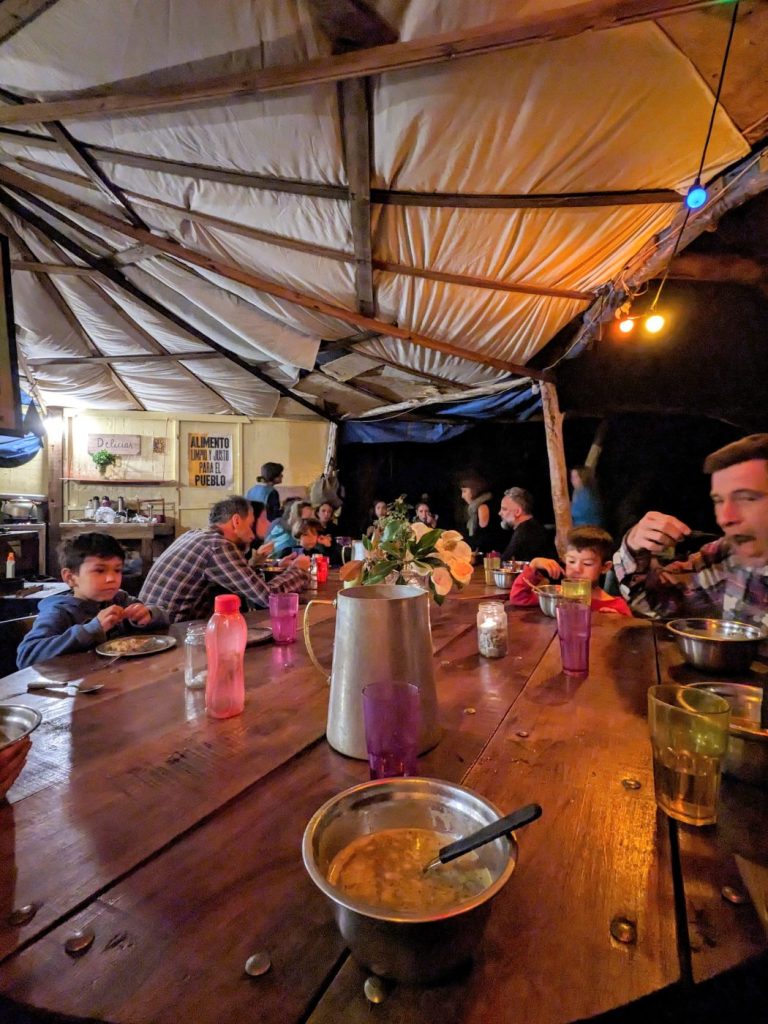

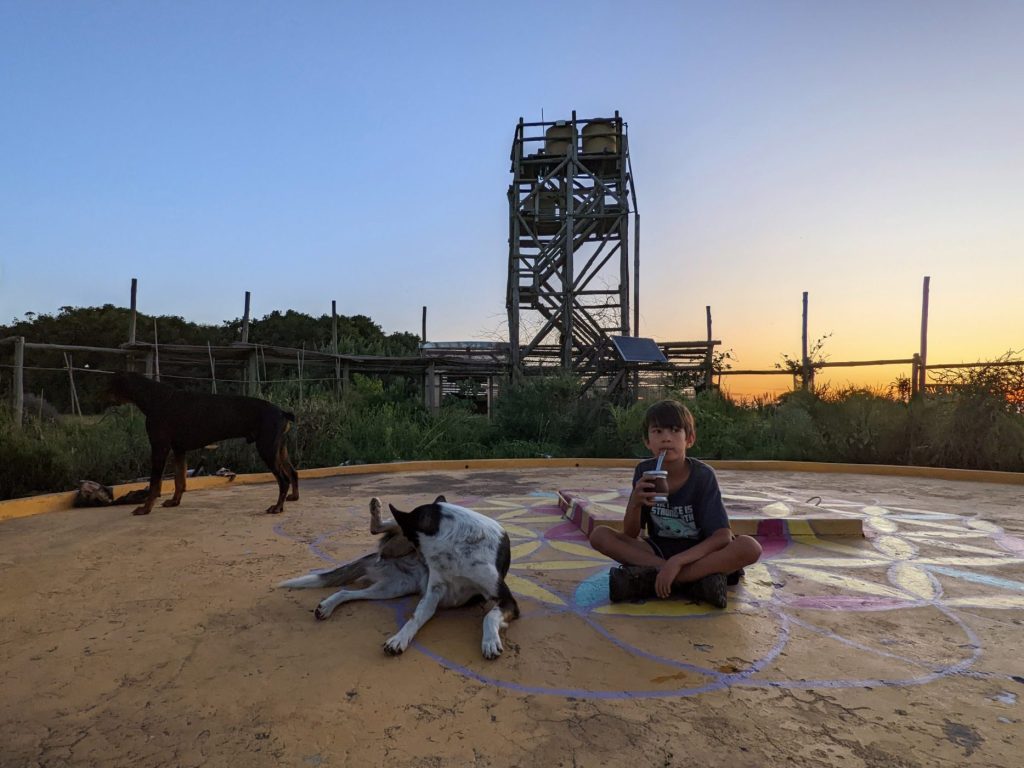
#3: Kaiwai Permaculture in Bolivia
For a back-to-basics, homesteading experience, Kaiwai Permaculture Farm in Mizque (read: middle of nowhere), Bolivia is the place to be. Simon, a New Zealand expat, bought a few acres of farmland and got to work putting innovative farming practices to the test.
To the bewilderment of his neighbors, he installed a swale straight through the middle of his property. It slows down the rainwater runoff, he explains, recharging the groundwater table.
We worked mornings cutting a few rows of alfalfa for the horse, the rabbits and the turkeys and doing other odd jobs around the property. For one of my first jobs, I end up repairing the watermain I cracked with a shovel while installing a chicken fence (I couldn’t have known it was there!)
In his course, we learned both the details and the big picture of living off the land, building local communities, and severing our reliance on larger impersonal institutions. The course takes a surprisingly strong ideological and political turn, where he wades into very alternative, right-wingish theories on medicine, money, government, and world events. While I strongly disagreed with many of the key points, one point I could agree on, and hadn’t put much thought into before, was that we spend way too much time obsessing over really big issues we can’t control, and overlook the smaller, more local things within our realm of influence.
Simon takes serious his belief in local governance. He submits and contributes to the local indigenous “sindicato” of land owners, who resolve disputes and try to fairly distribute resources like irrigation water. We also got to see firsthand the rich web of reciprocal relationships he has with his neighbors. For instance, he might trade his super-rich fertilizer (Bokashi) for a neighbor’s apples or guava.
Accommodations were the most basic of any of the farms we stayed at. It was also the least expensive (you pay for the course; room and board are provided in exchange for the volunteering). But that was part of the adventure!
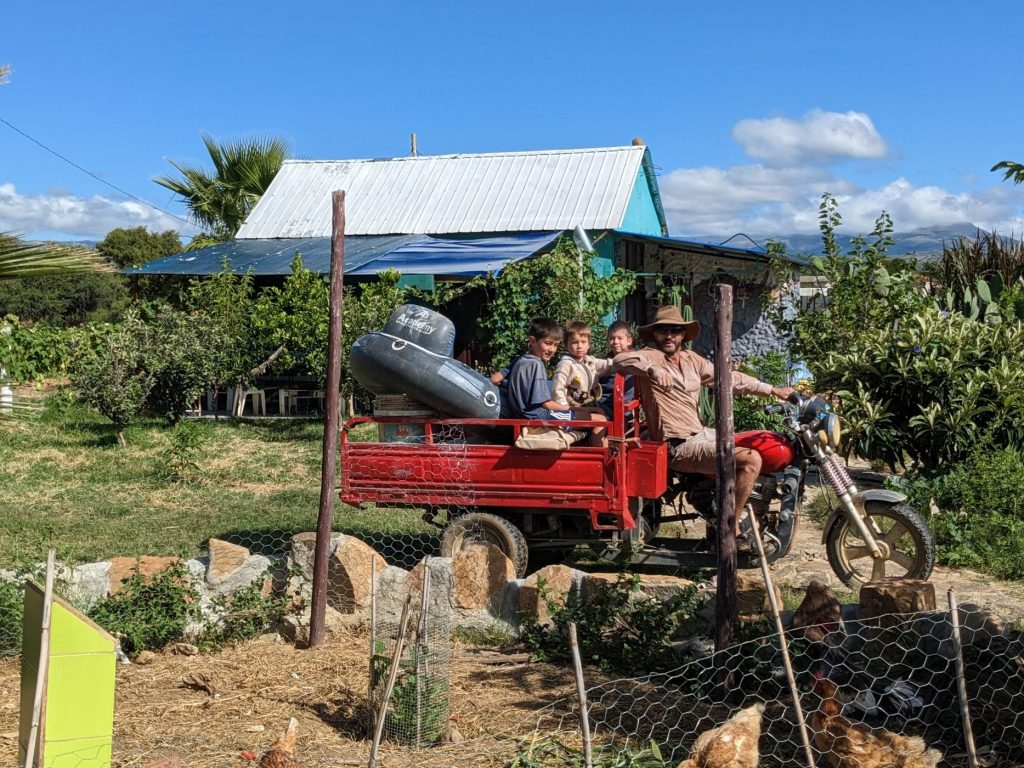

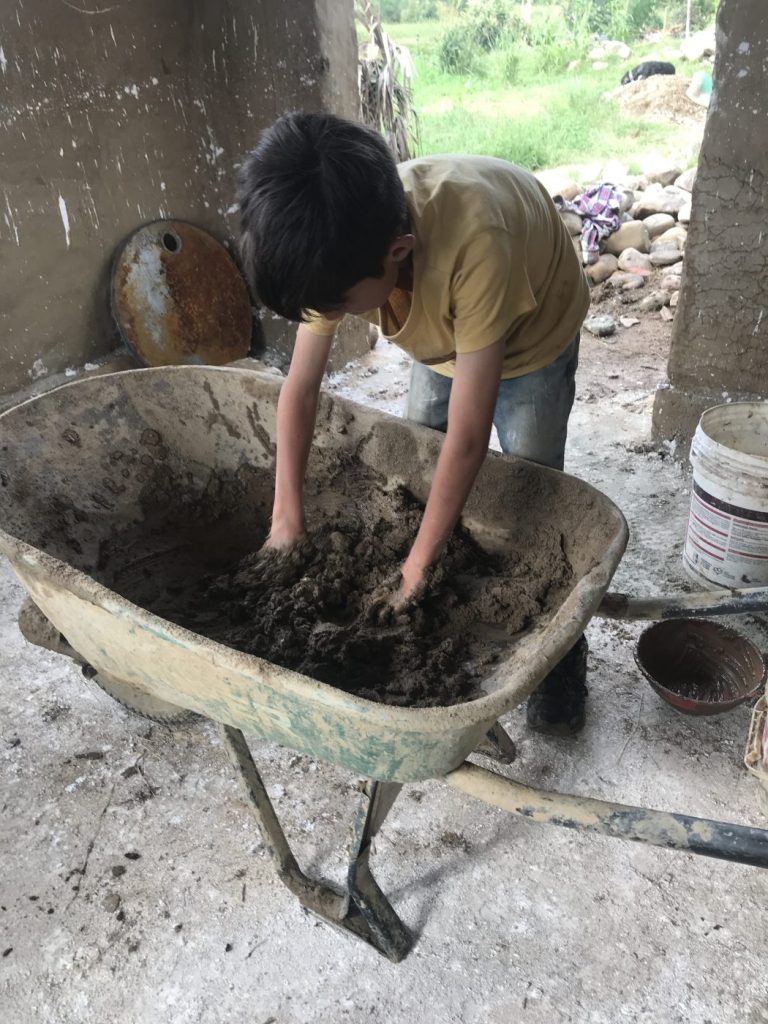
My oldest son mixes a batch of wall sealant, which includes mud, sand, slimy fermented prickly pear water, and horse manure.
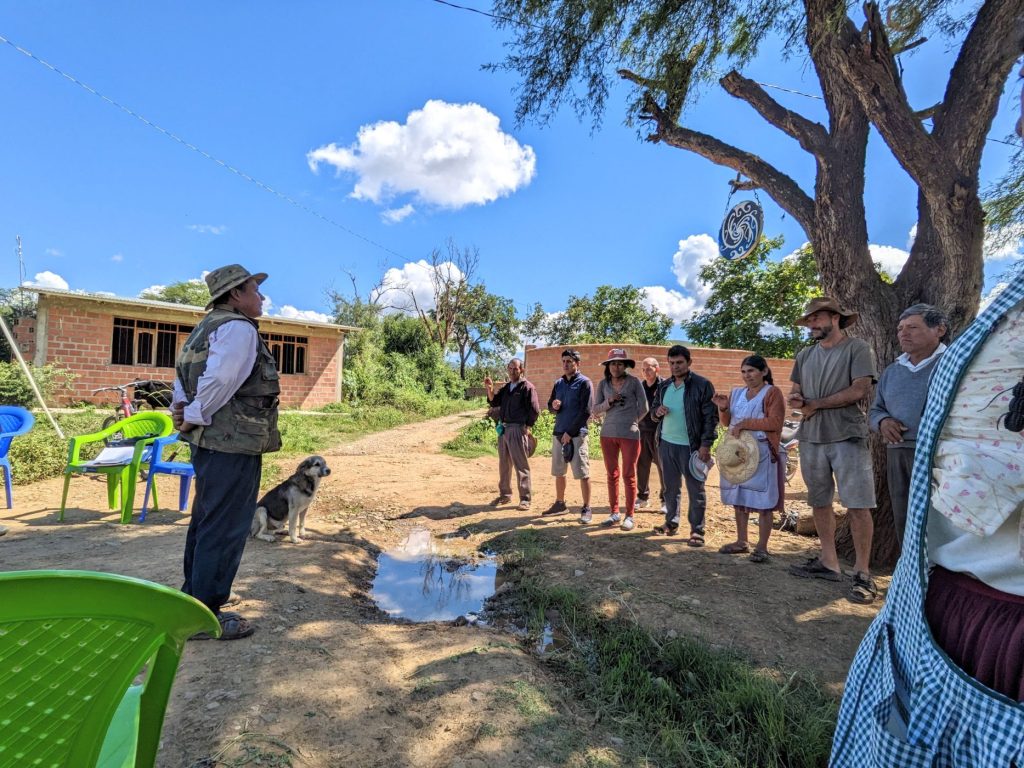
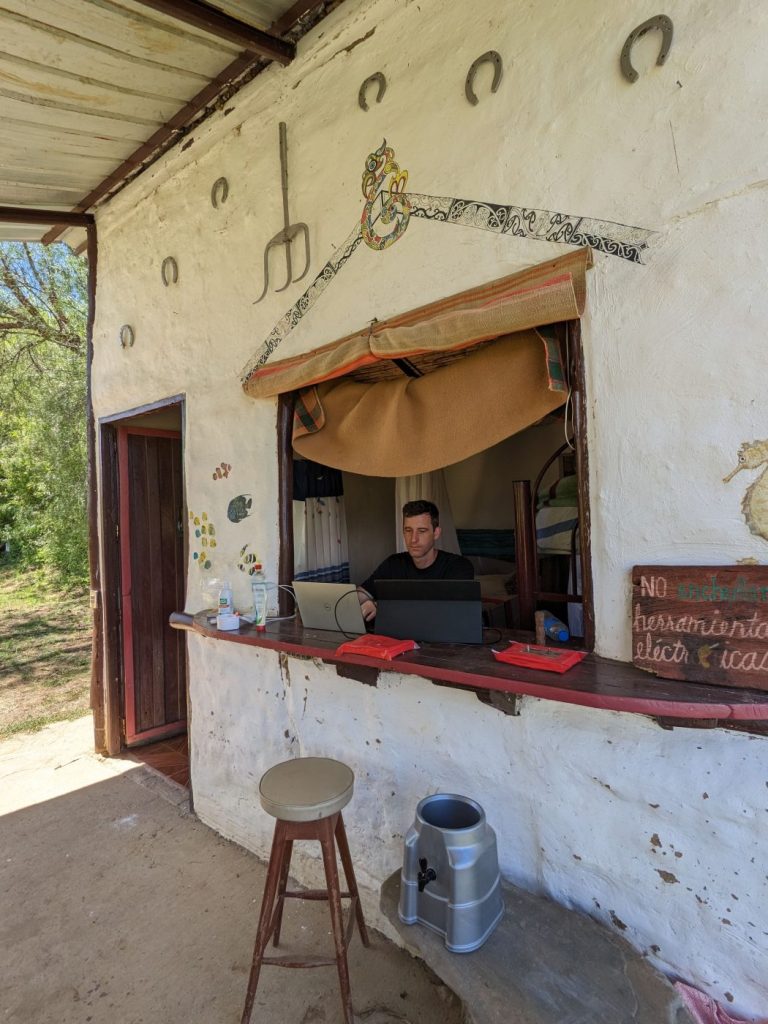
Even way out here I can connect using a cheap cell plan from the local carrier.
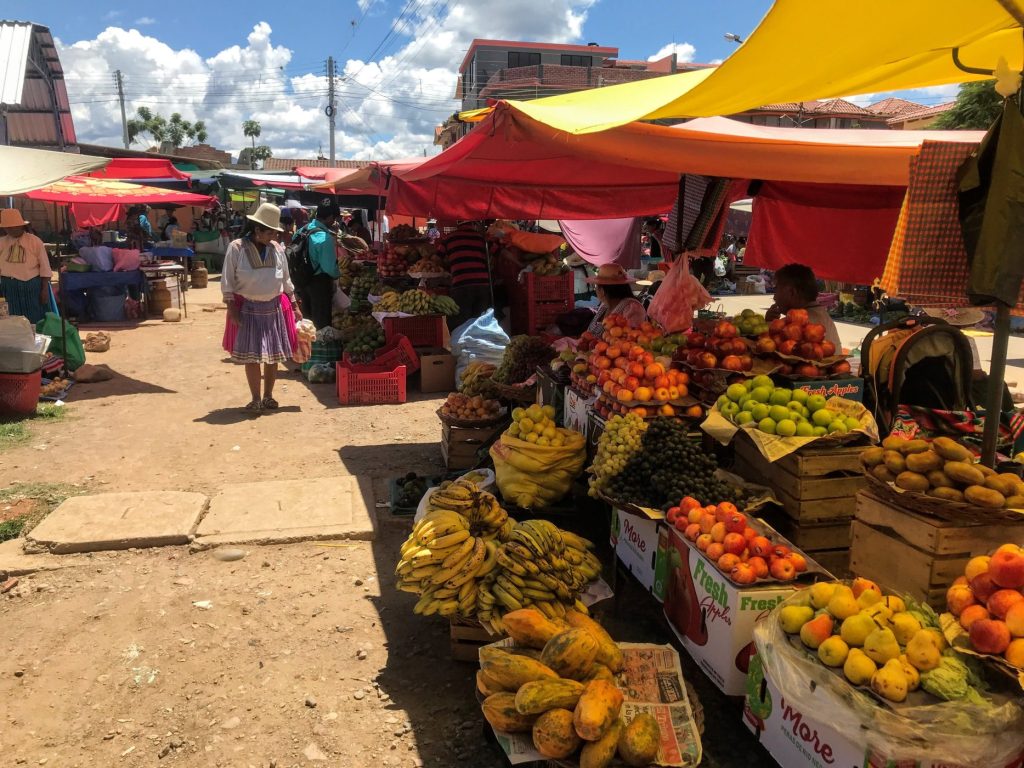
There you can get your shoes repaired for less than $2 USD, or get lunch for the entire family for a few bucks.
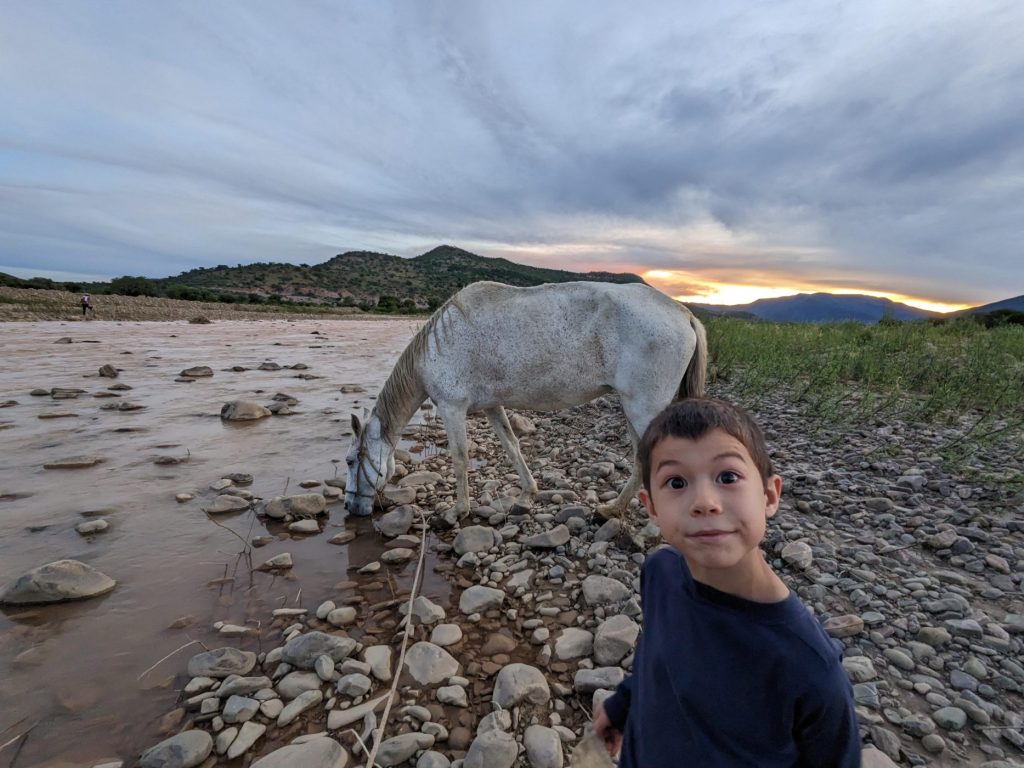
#4: Fundación Retoño in Chile
Cristina, Alejandra, and Andrea are the three young women who lead Fundación Retoño. Their Christian faith informs their passion for wildlife conservation, sustainable farming, and mentorship. They run retreats for all ages that help people connect with what they observe in the natural world and provide lessons on how we can care for creation while simultaneously enjoying it and meeting our own needs.
Our contact with Cristina was made through a non-profit, A Rocha, that Liuan is involved with. For that reason, we were welcomed as friends. Originally, the plan was for us to spend time volunteering in exchange for our stay. The plan was for me to lead a construction project, but that fell through. Instead we spent more time in deep conversation after meals—what they called sobremesa in Spanish, not to be confused with the same word in Portuguese which means dessert—than we did volunteering, though we did do some.
Nonetheless, it was nothing short of an amazing time. So much of our travels as a family felt insular. Here we made fast friends and got to spend time in beautiful central Chile, including a hike into a volcano that blew our minds.
An established volunteer program is not part of their business plan. And, in fact, they’ve gone through bit of a transition since we were there. But if you find what they’re doing interesting, it never hurts to reach out.
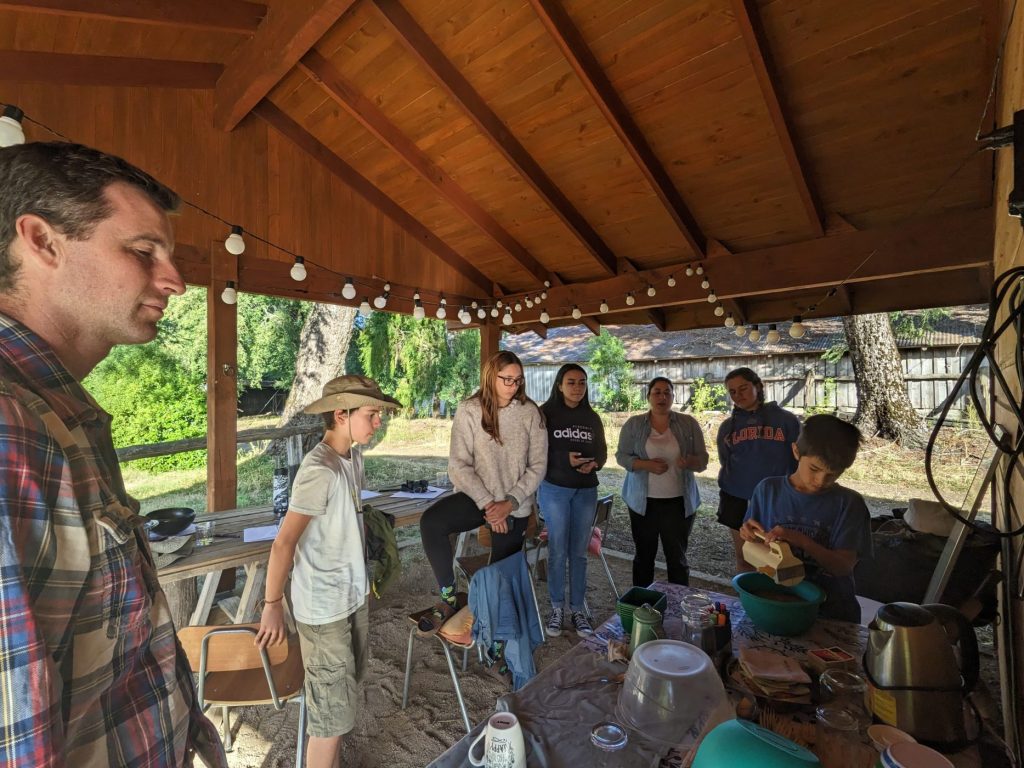
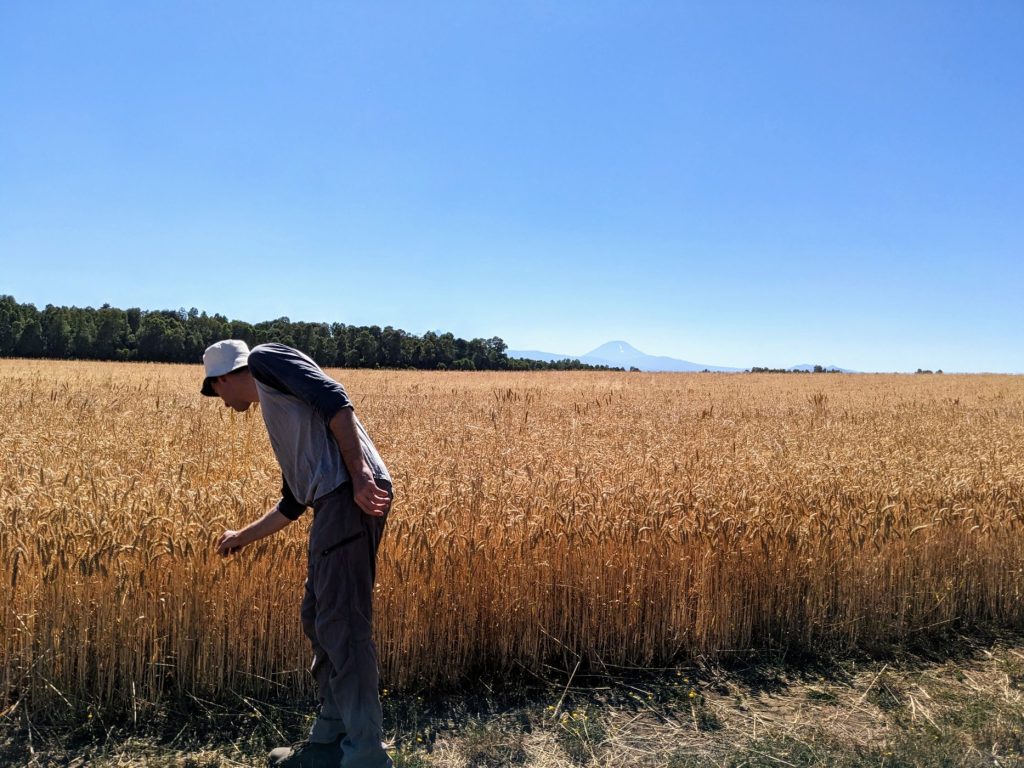
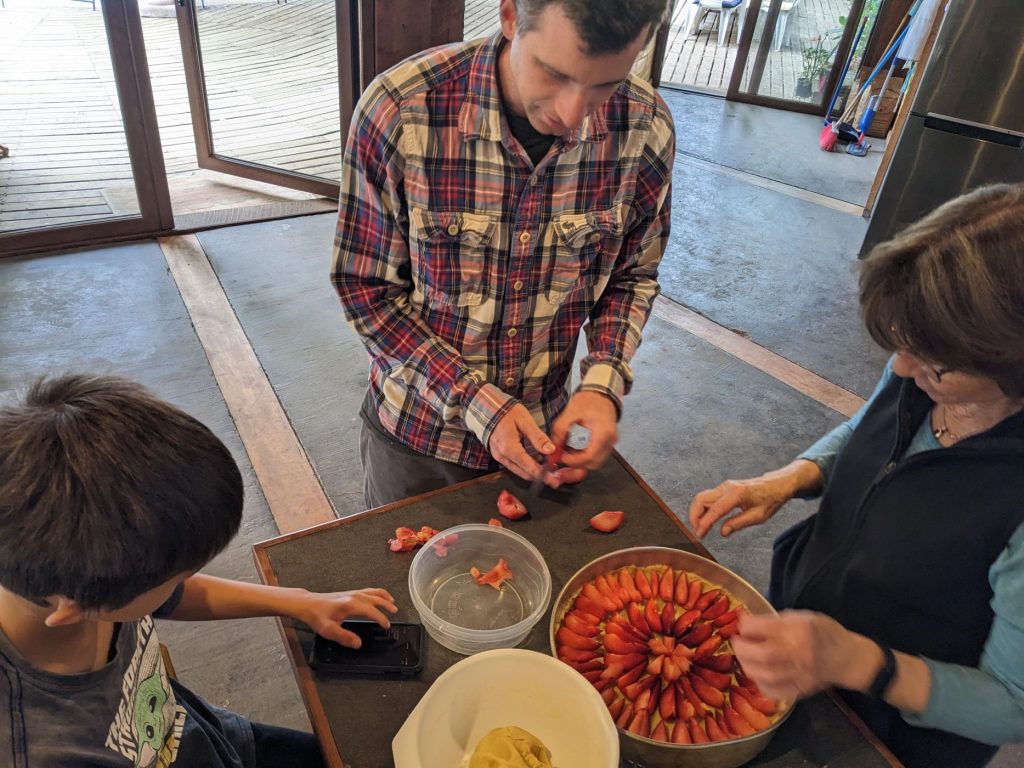
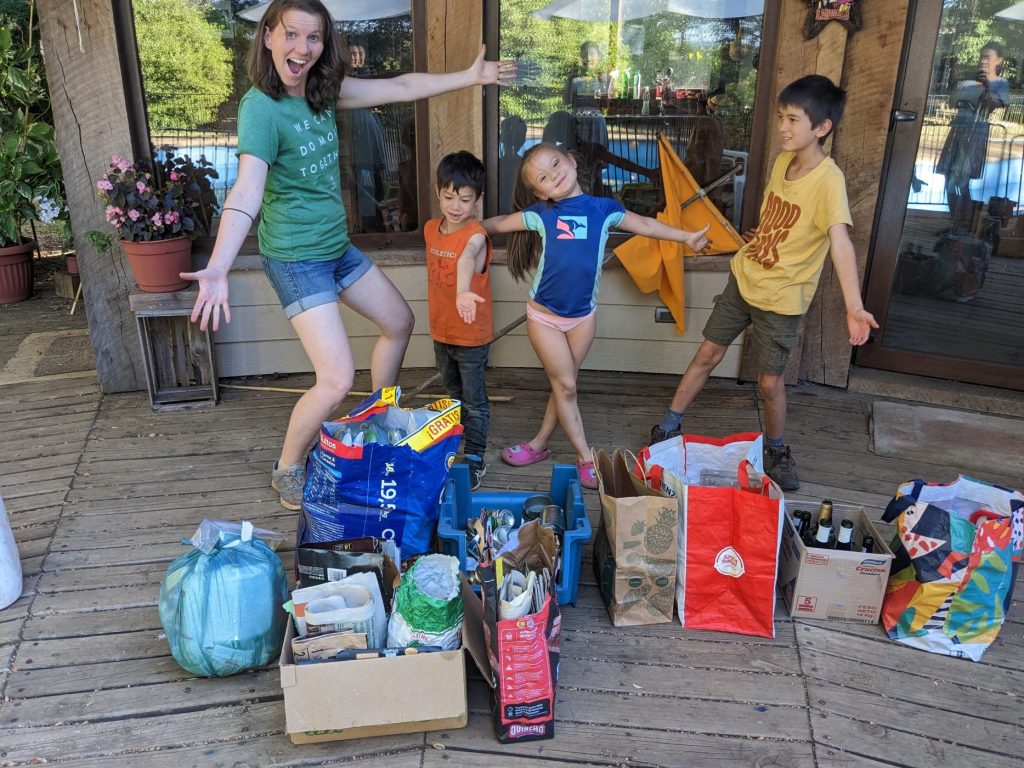


#5 Rio Lindo Coffee Farm in Ecuador
This opportunity came about by means of another personal connection. There is no volunteer program at Rio Lindo. Janet is a retired expat who is basically living our dream. She bought a boutique hotel and coffee farm several hours north of Quito.
Nestled in a forest, bordered by a rushing river, you can peer across the valley to Cuellaje, a cute town accessible by bus on unpaved, single-lane roads. In other words, a very cool adventure just to get there.
We spent mornings picking ripe coffee berries and, in my case, working on construction projects. The indigenous caretaker of the coffee operation took us under his wing and showed us every step of the process from harvest, to washing, to fermentation, to roast. We also got the opportunity to sub in for Janet and teach English at the local school, which was a blast. Janet was a wise mentor and a person we could easily converse with for hours.
I’m not certain what other volunteer inquiries she would accept. She typically gets her help from locals and receiving volunteers was a first for her when we came. But, honestly, staying there and paying the room rate is quite affordable. I’m sure they would show you around the coffee operation if you showed interest.

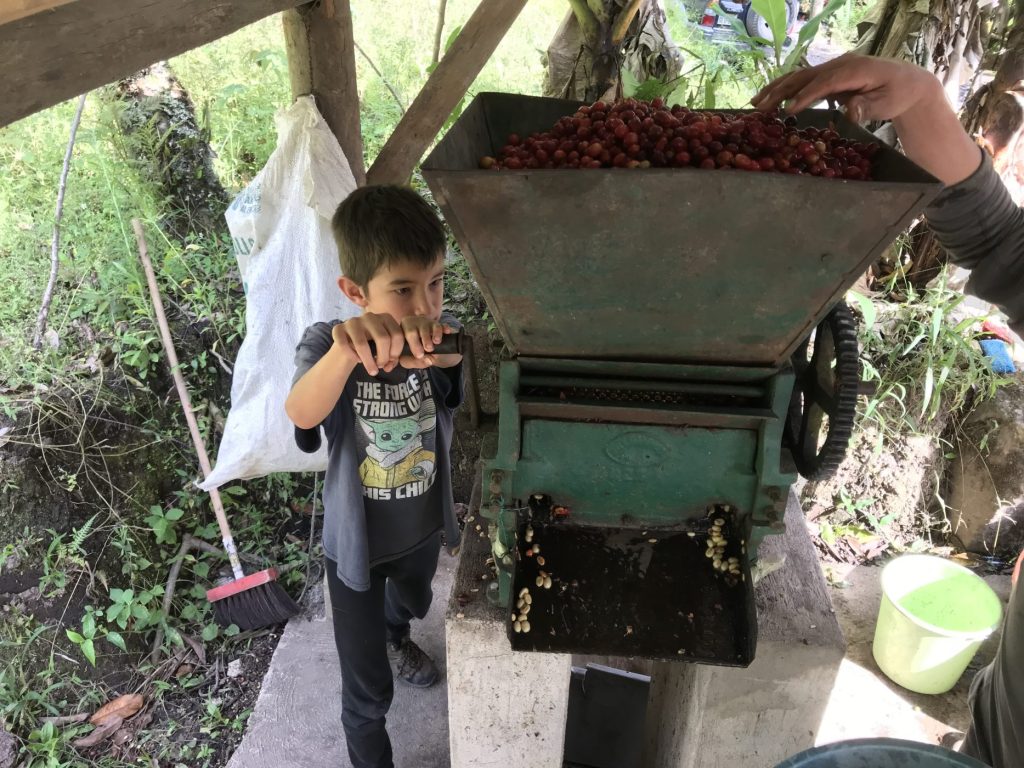

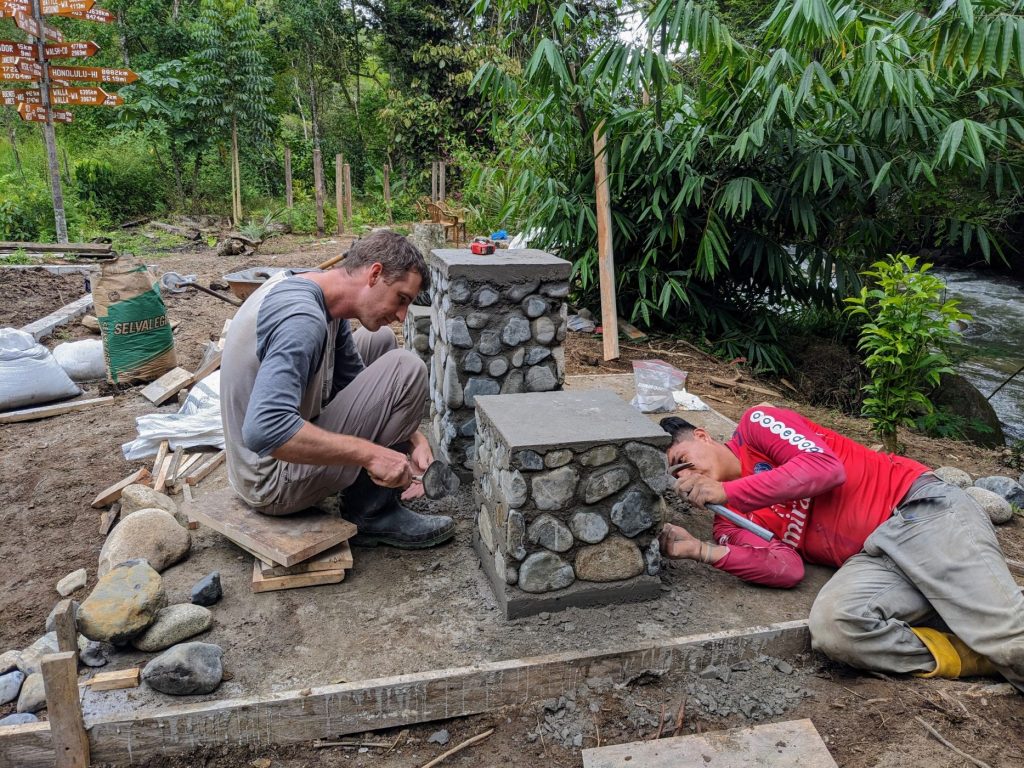
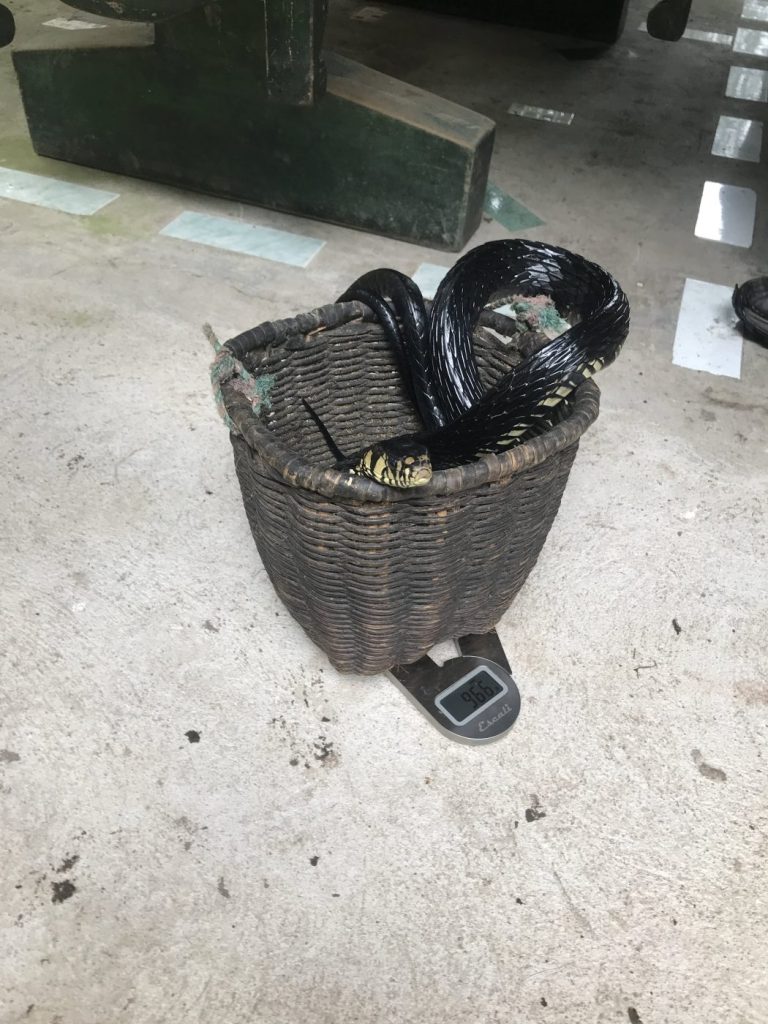
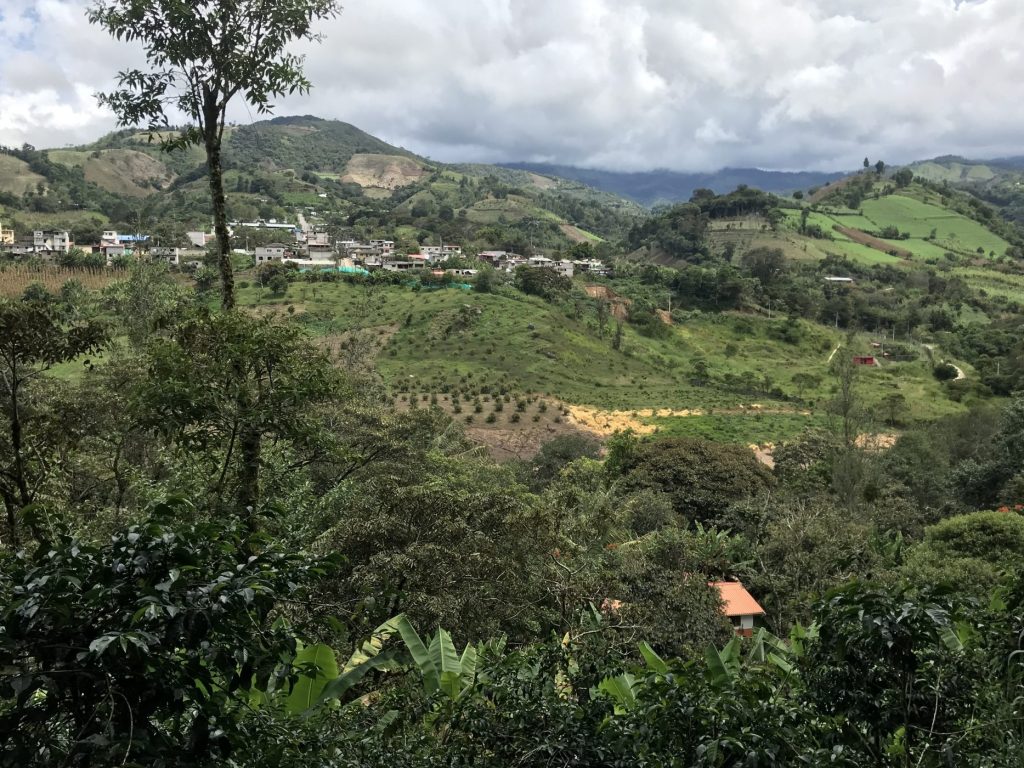
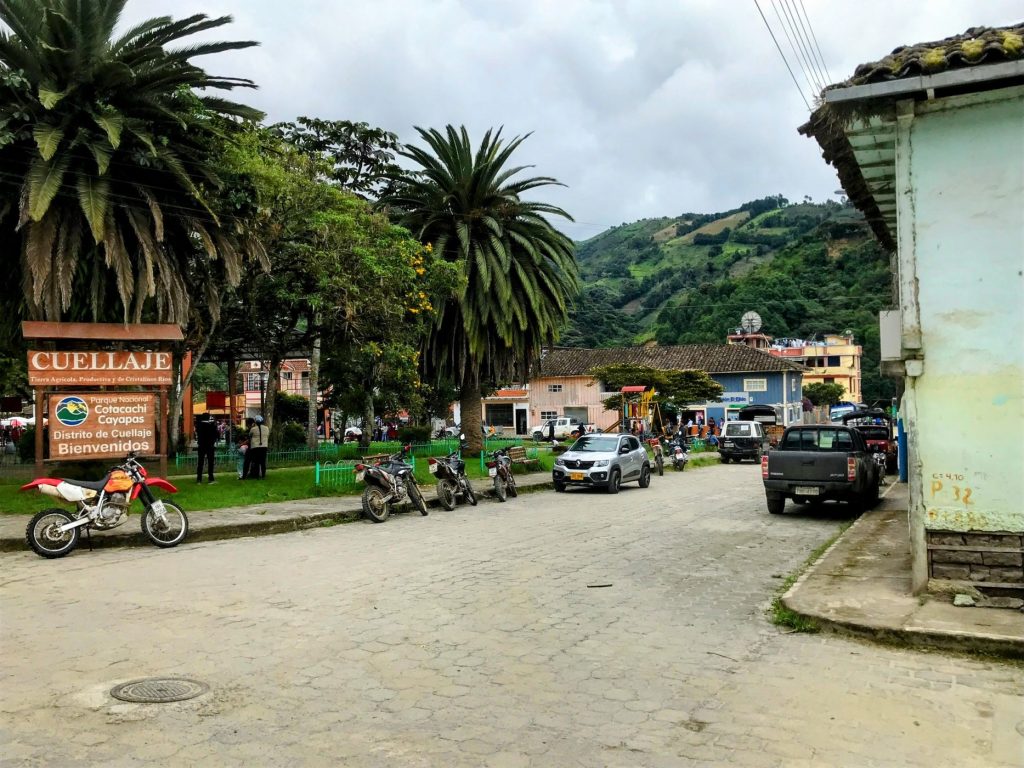
Finding the Volunteering Opportunity That’s Right For You
As you can now see, our farm experiences came in all shapes and sizes. We had the time—a whole year—to try different things. Each experience taught us something new.
We went about finding those opportunities in a few different ways. Here is how we found each one:
Eco Caminhos: Google Search “permaculture farm in Brazil”
Quinta Esencia: A friend of a friend put us in touch with them.
Kaiwai Farm: I searched Workaway and then did a little sleuthing to contact Simon directly so I didn’t have to pay to become a member of Workaway. (We found several other leads that way too).
Fundación Retoño: Friends at a non-profit Liuan works for, A Rocha, put us in contact with Cristina.
Rio Lindo: Janet was the youth group leader of Liuan’s anthropology professor. She had some funny stories to tell about this professor in his younger days.
In summary, our search included a combination working our social networks and leveraging the World Wide Web. The opportunities we found through personal contacts had a very different feel than the ones with an established program and internet presence. We were received as friends in the former, rather than customers. That said, the more established programs provided a lot more education and structure to our days. And we often ended up becoming friends!
I’ll say it again. Families with children are more challenging to host as volunteers. So it is just as true to say that the organizations we stayed with chose us, as it is to say that we chose them. In fact, the only organization that seemed to regularly receive families was Eco Caminhos. For the others, a North American family of five was a first.
Be that as it may, the experiences and the education were a priceless part of our grand adventure. With some flexibility and a willingness to make your presence beneficial to your hosts, your family can embark on incredible and unique experiences.



